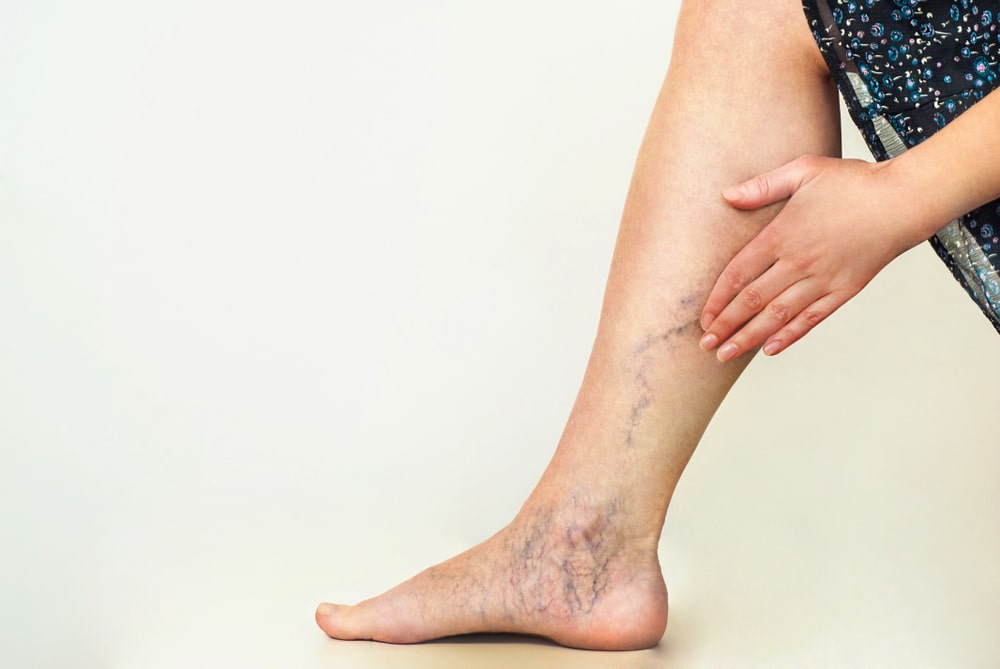By: Dr. Dev Batra | 01.29.23
Varicose veins are blood vessels that are damaged and can’t perform their function efficiently. Treating the problem before it becomes advanced protects your entire circulatory system — and your overall health.
At Texas Vascular Institute, with locations in Dallas and Hurst, Texas, interventional radiologist Dr. Dev Batra and his staff routinely use the VenaSeal™ procedure to remove varicose veins. Here’s what it involves.

The problem with varicose veins
Varicose veins, those ropy, colored protrusions on your legs and feet, occur when superficial veins become damaged. Whether that damage occurs from an injury or high blood pressure, the valves that allow for one-way-only blood flow back to the heart are no longer able to close completely, allowing blood to backtrack along its path, pooling around the valve. The vein becomes engorged with blood.
That state is known as venous insufficiency because the blood flow is no longer sufficient to supply the body’s tissues with oxygen and nutrients. Failure to treat the underlying condition can lead to more advanced — and harder to treat — stages of vein disease.
The 4 steps of VenaSeal
VenaSeal is a minimally invasive, non-thermal treatment for varicose veins and other stages of vein disease.
Before the procedure, Dr. Batra orders an ultrasound imaging exam of the leg to assess the state of disease and plan the procedure. Once he’s ready, the VenaSeal procedure goes through four steps.
Step 1: Places the catheter
Dr. Batra starts by numbing the area where he’ll access the vein. Then, using ultrasound, he inserts a catheter (i.e., a small hollow tube) into the diseased vein. You may feel some pressure as it goes in, but no pain.
Step 2: Introduces adhesive
VenaSeal uses a specially formulated medical adhesive (glue) that holds the vein walls together, stopping the blood flow and rerouting it to a nearby healthy vein. Dr. Batra guides the adhesive through the catheter until it reaches the desired spot. Over time, your body absorbs the inactive veins, and the protrusions will disappear from your legs.
Step 3: Applies light pressure
Once the adhesive has been placed in the vein, Dr. Batra applies light external pressure to hold the walls together. He repeats this action along the entire length of the vein.
Step 4: Removes the catheter
When the entire vein is sealed, Dr. Batra removes the catheter and places a small bandage over the puncture site. He also makes recommendations for any follow-up care you may need.
According to the manufacturer, the VenaSeal system boasts a 94.6% closure rate after five years.
If you’re dealing with varicose veins, even if they’re not causing you discomfort, it’s a good idea to have them removed to improve your vein health. Texas Vascular Institute can help. To get started, call us at either location or book your appointment online.
Read more blogs
Varicose Veins in Hurst: Expert Care at Your Doorstep
At Texas Vascular Institute (TVI), we empathize with the discomfort and worry caused by varicose veins. That's why we're here in Hurst, providing cutting-edge treatments that are customized to address your unique needs. With our team of experts wielding extensive knowledge and experience, we promise to provide the utmost care in a warm and compassionate atmosphere. Let us help you find relief and regain your confidence!
Varicose Veins in Dallas: Quality Care You Can Trust
Our exceptional team of vascular specialists are true leaders in their field, armed with years of invaluable experience. Harnessing the power of cutting-edge advancements in vein treatment, they've transformed the lives of numerous patients, liberating them from the pain and unsightly burden of varicose veins. When you choose TVI, you're opting for unparalleled care and unwavering commitment to your varicose vein needs in Dallas.
How to Get Rid of Varicose Veins in Hurst?
The causes and risk factors of varicose veins vary from genetics to age, pregnancy, obesity, and prolonged standing or sitting, among other factors. Some typical signs and possible issues include discomfort, inflammation, irritation, hemorrhage, dermatological alterations, sores, and thrombosis. You may want to seek medical attention if you experience any of the following symptoms or complications.
WHAT OUR PATIENTS
have to say
Texas Vascular Institute always appreciates feedback from our valued patients. To date, we’re thrilled to have collected 378 reviews with an average rating of 5 out of 5 stars. Please read what others are saying about Texas Vascular Institute below, and as always, we would love to collect your feedback.
Leave a Review
Amazing Practice
I'm very particular with my Healthcare and tend to be cautious with referrals to specialists. This office is amazing from the first point of contact. Their staff are friendly, professional and highly knowledgeable. Then the Dr is just as amazing as his staff, absolutely brilliant. Office manager Jessica has this office running like a well oiled machine and does so with a smile, an air of confidence, kindness and professionalism. Love this practice!!
- Richard G.

Beyond Thankful
Dr Batra and his staff are amazing! We are so grateful to have found him. Everyone is so kind and so caring and Dr Batra explains everything so well and does procedures with excellence. Beyond thankful to be under their care!!!
- Bitsy P.

Gold Standard
This is a gold standard for how a medical practice should be run. I was promptly seen at my scheduled time, my ultrasound was thorough and I received plenty of attention and care from the staff and Dr.Batra.
- Weronika L.
INSURANCE
We accept most major insurance plans. Please contact the medical office for all insurance related questions.









3500 Oak Lawn Ave, #760
Dallas, TX 75219
For Appointments: 972-798-4710
General Inquiries: 972-646-8346

809 West Harwood Rd, Suite 101,
Hurst, TX 76054
For Appointments: 972-798-4710
General Inquiries: 972-646-8346

